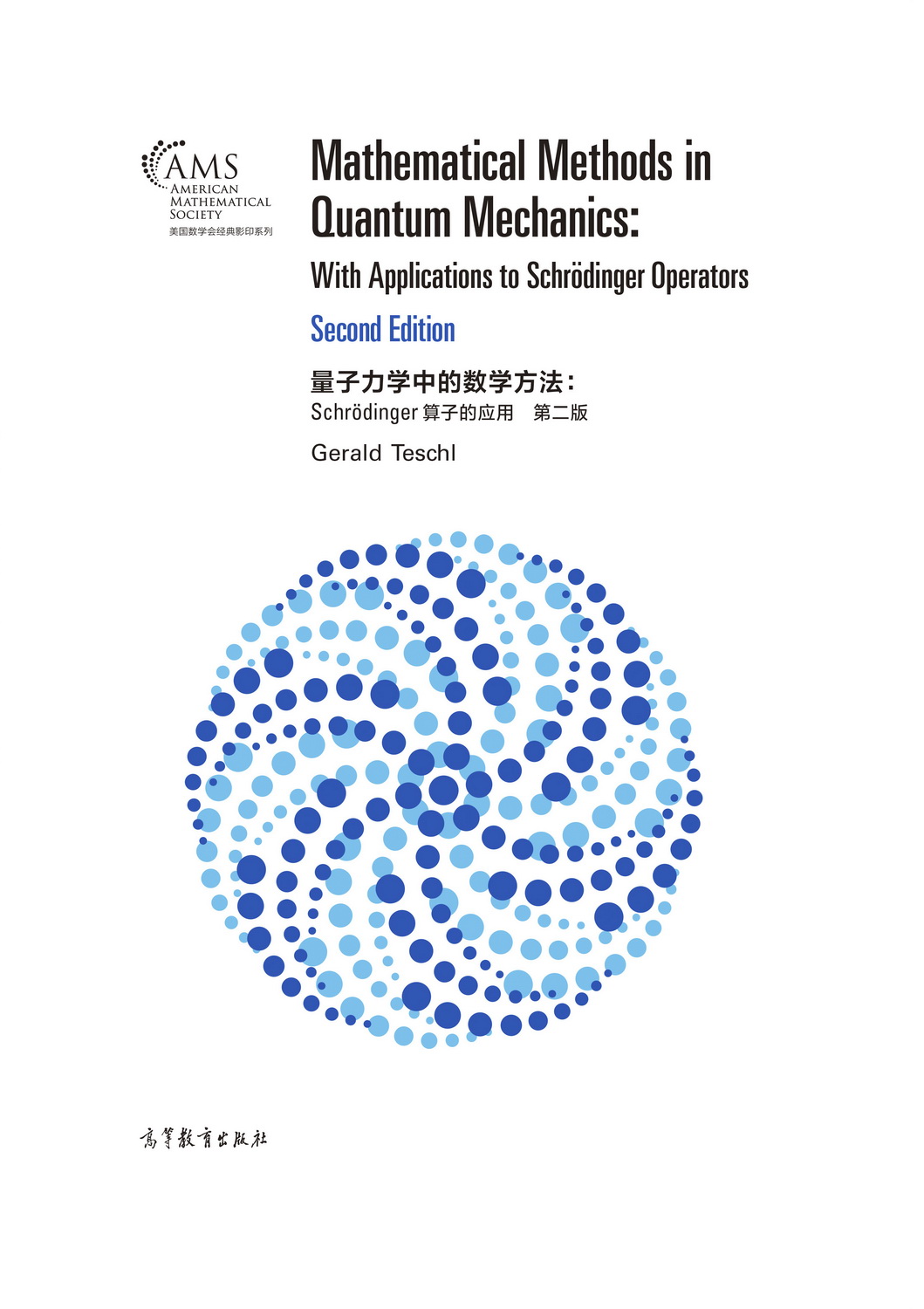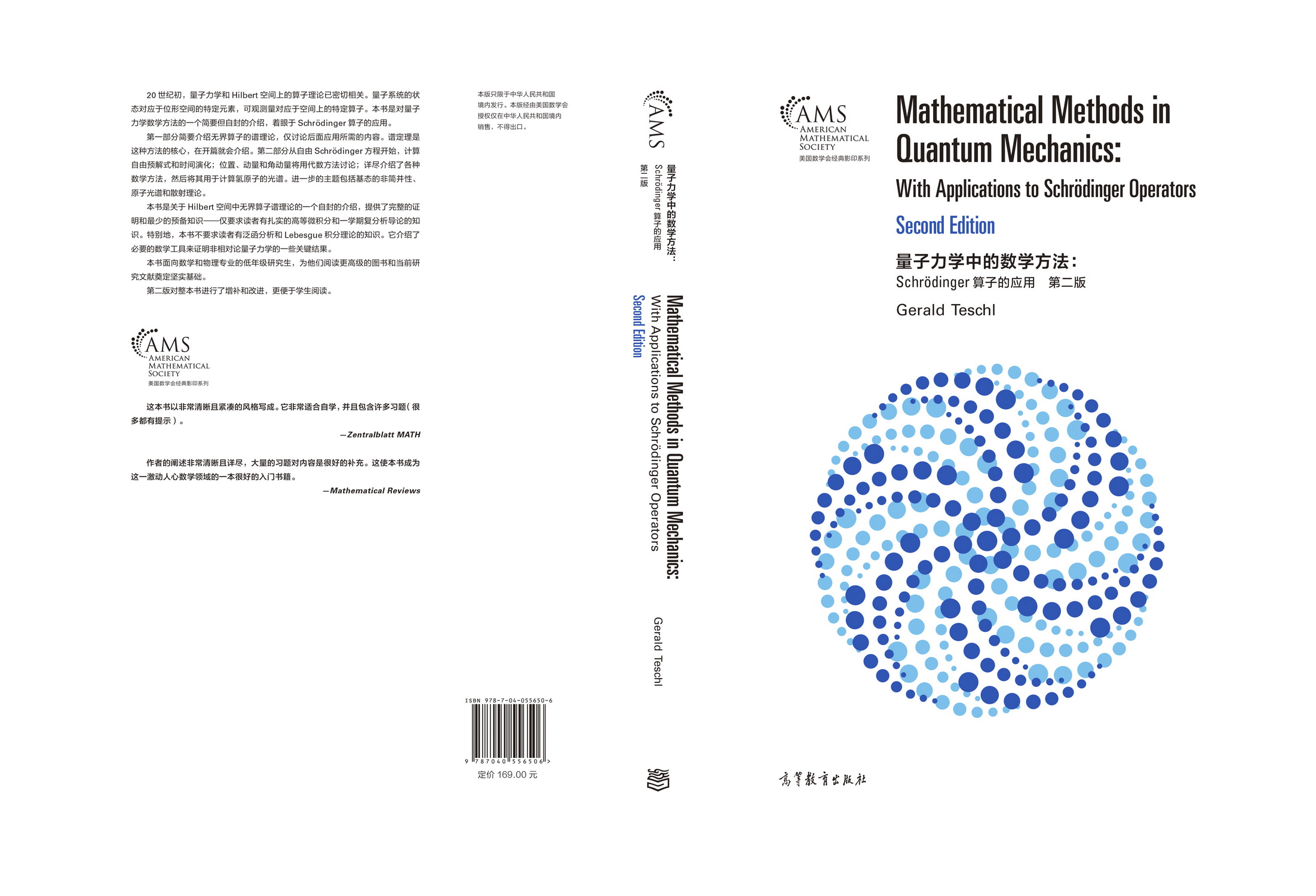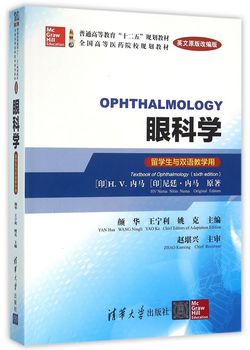量子力学中的数学方法:Schrödinger算子的应用(影印版)
作者: Gerald Teschl
出版时间:2021-03
出版社:高等教育出版社
- 高等教育出版社
- 9787040556506
- 1版
- 369858
- 48266244-2
- 精装
- 16开
- 2021-03
- 630
- 380
- 理学
- 数学类
- 数学类
- 研究生及以上
前辅文
Preface
Part 0. Preliminaries
Chapter 0. A first look at Banach and Hilbert spaces
0.1. Warm up: Metric and topological spaces
0.2. The Banach space of continuous functions
0.3. The geometry of Hilbert spaces
0.4. Completeness
0.5. Bounded operators
0.6. Lebesgue Lp spaces
0.7. Appendix: The uniform boundedness principle
Part 1. Mathematical Foundations of Quantum Mechanics
Chapter 1. Hilbert spaces
1.1. Hilbert spaces
1.2. Orthonormal bases
1.3. The projection theorem and the Riesz lemma
1.4. Orthogonal sums and tensor products
1.5. The C* algebra of bounded linear operators
1.6. Weak and strong convergence
1.7. Appendix: The Stone–Weierstraß theorem
Chapter 2. Self-adjointness and spectrum
2.1. Some quantum mechanics
2.2. Self-adjoint operators
2.3. Quadratic forms and the Friedrichs extension
2.4. Resolvents and spectra
2.5. Orthogonal sums of operators
2.6. Self-adjoint extensions
2.7. Appendix: Absolutely continuous functions
Chapter 3. The spectral theorem
3.1. The spectral theorem
3.2. More on Borel measures
3.3. Spectral types
3.4. Appendix: Herglotz–Nevanlinna functions
Chapter 4. Applications of the spectral theorem
4.1. Integral formulas
4.2. Commuting operators
4.3. Polar decomposition
4.4. The min-max theorem
4.5. Estimating eigenspaces
4.6. Tensor products of operators
Chapter 5. Quantum dynamics
5.1. The time evolution and Stone’s theorem
5.2. The RAGE theorem
5.3. The Trotter product formula
Chapter 6. Perturbation theory for self-adjoint operators
6.1. Relatively bounded operators and the Kato–Rellich theorem
6.2. More on compact operators
6.3. Hilbert–Schmidt and trace class operators
6.4. Relatively compact operators and Weyl’s theorem
6.5. Relatively form-bounded operators and the KLMN theorem
6.6. Strong and norm resolvent convergence
Part 2. Schrödinger Operators
Chapter 7. The free Schrödinger operator
7.1. The Fourier transform
7.2. Sobolev spaces
7.3. The free Schrödinger operator
7.4. The time evolution in the free case
7.5. The resolvent and Green’s function
Chapter 8. Algebraic methods
8.1. Position and momentum
8.2. Angular momentum
8.3. The harmonic oscillator
8.4. Abstract commutation
Chapter 9. One-dimensional Schrödinger operators
9.1. Sturm–Liouville operators
9.2. Weyl’s limit circle, limit point alternative
9.3. Spectral transformations I
9.4. Inverse spectral theory
9.5. Absolutely continuous spectrum
9.6. Spectral transformations II
9.7. The spectra of one-dimensional Schrödinger operators
Chapter 10. One-particle Schrödinger operators
10.1. Self-adjointness and spectrum
10.2. The hydrogen atom
10.3. Angular momentum
10.4. The eigenvalues of the hydrogen atom
10.5. Nondegeneracy of the ground state
Chapter 11. Atomic Schrödinger operators
11.1. Self-adjointness
11.2. The HVZ theorem
Chapter 12. Scattering theory
12.1. Abstract theory
12.2. Incoming and outgoing states
12.3. Schrödinger operators with short range potentials
Part 3. Appendix
Appendix A. Almost everything about Lebesgue integration
A.1. Borel measures in a nutshell
A.2. Extending a premeasure to a measure
A.3. Measurable functions
A.4. How wild are measurable objects?
A.5. Integration—Sum me up, Henri
A.6. Product measures
A.7. Transformation of measures and integrals
A.8. Vague convergence of measures
A.9. Decomposition of measures
A.10. Derivatives of measures
Bibliographical notes
Bibliography
Glossary of notation
Index







